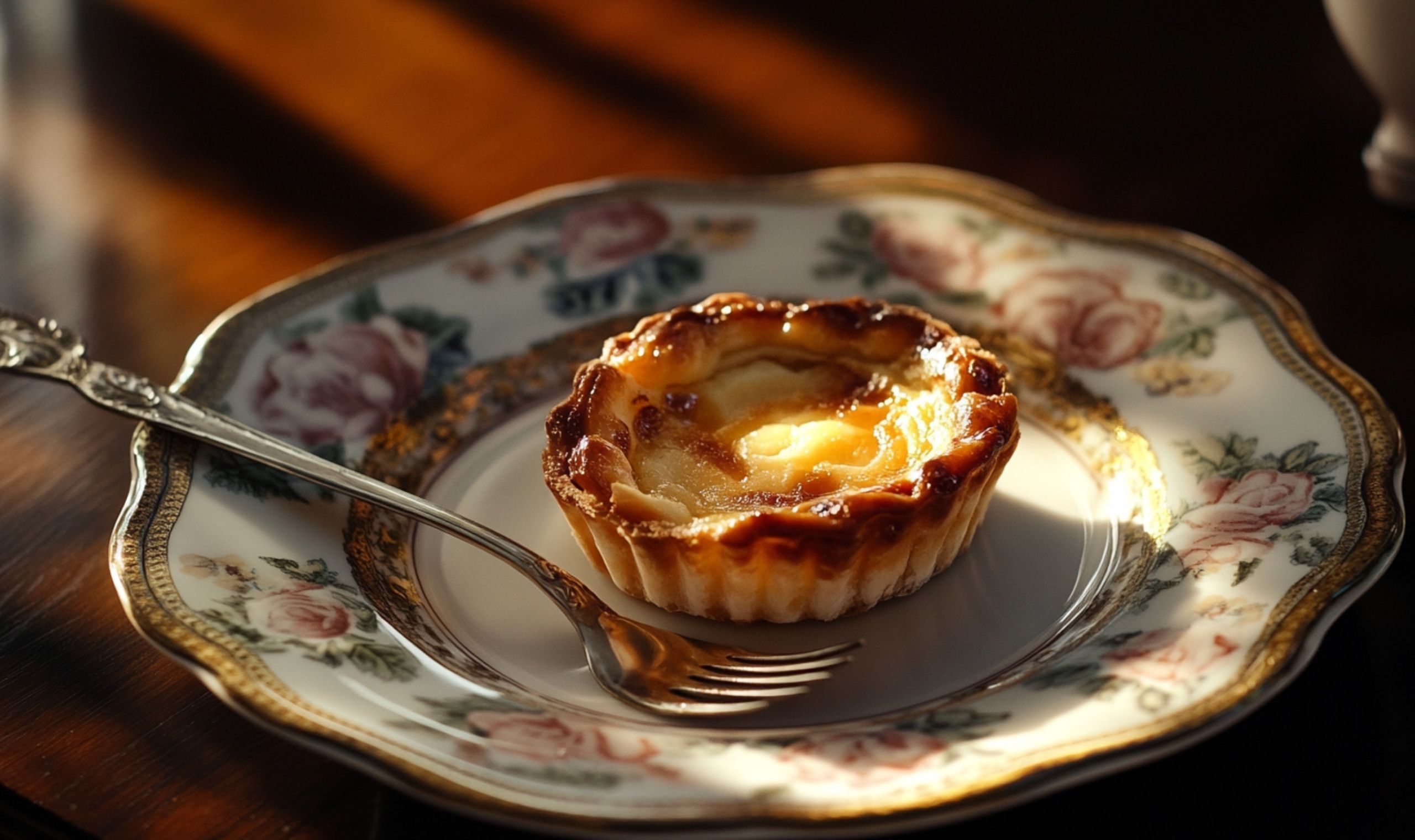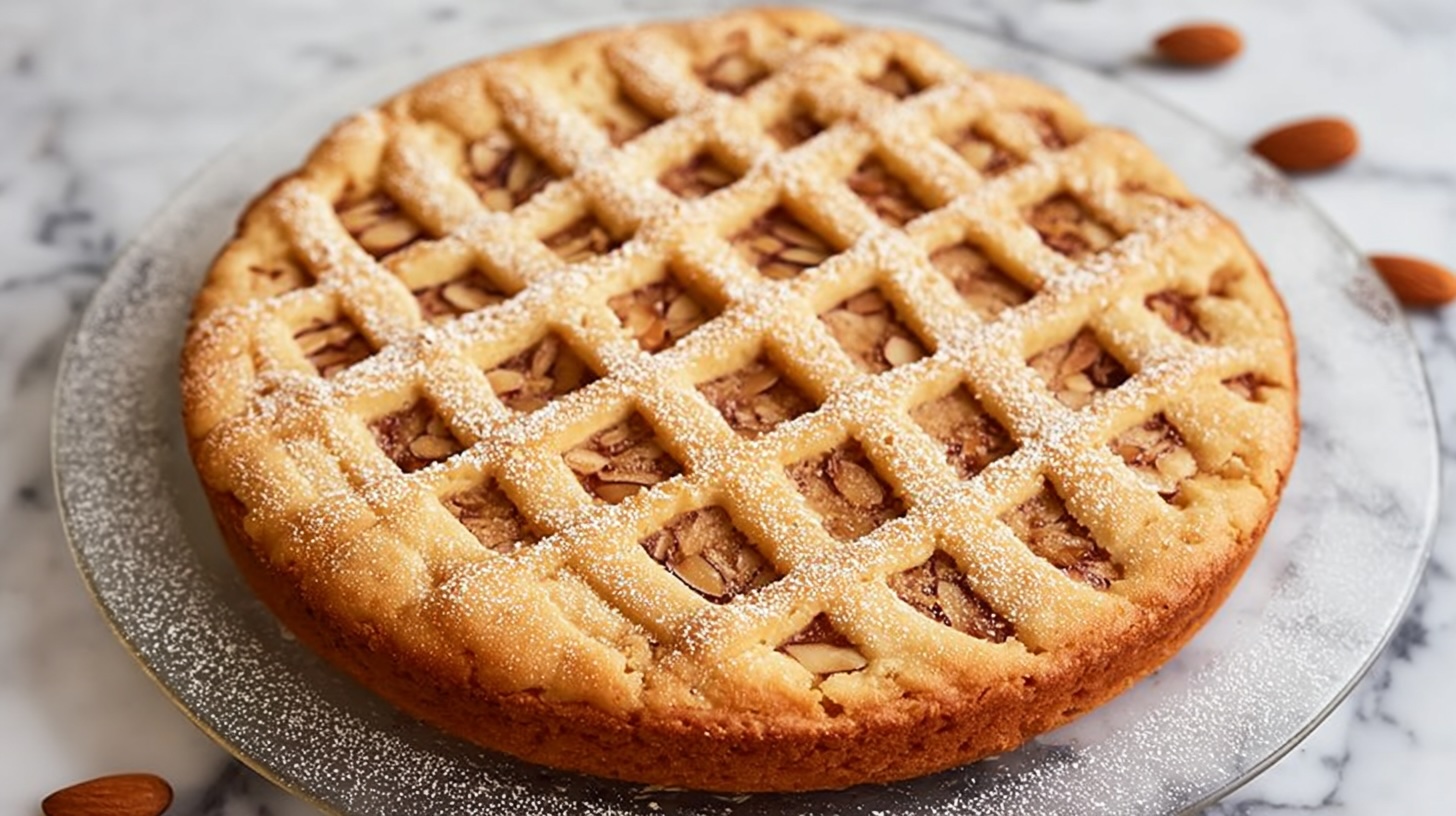Pastel de Nata: Portugal’s Golden Custard Crown
If there’s one dessert that can make you book a flight to Lisbon faster than you can say “bom dia,” it’s pastel de nata. These tiny custard tarts, with their flaky, buttery crust and rich, creamy filling, are the edible equivalent of sunshine. Whether enjoyed warm from the oven or paired with a shot of espresso at a local café, they’re the kind of treat that feels simultaneously indulgent and utterly comforting.
The Tale of a Monastic Marvel
Pastel de nata’s story begins in the 18th century at the Jerónimos Monastery in Belém, near Lisbon. Back then, egg whites were widely used to starch clothes, leaving monks and nuns with an excess of egg yolks. Ever resourceful, they turned these surplus yolks into a custard filling, which they baked into flaky pastry shells. Thus, pastel de nata was born.
When the monastery closed in the 19th century, the secret recipe was sold to a sugar refinery, which eventually became the famed Pastéis de Belém bakery. Today, this bakery is a pilgrimage site for dessert lovers, serving up the original version of these iconic tarts.
Variations Across the Country
While pastel de nata is a staple across Portugal, regional variations add a local touch. In Lisbon, they’re often dusted with cinnamon and powdered sugar, adding an extra layer of flavour. In Porto, you might find them with a slightly firmer custard, perfect for pairing with the city’s famous port wine.
Outside Portugal, pastel de nata has made a name for itself worldwide. In Macau, the tarts lean towards a caramelised top, influenced by British custard tart traditions. No matter the variation, the essence of pastel de nata—golden, creamy, and irresistible—remains unchanged.
Drinks That Sing with Custard Tarts
A good pastel de nata deserves a great drink to go with it. In Portugal, these tarts are traditionally enjoyed with a bica, a strong espresso that perfectly balances the sweetness of the custard. For an evening treat, pair them with a glass of port or a chilled Madeira wine for a touch of elegance.
If you’re more into tea, a fragrant Earl Grey or a robust black tea pairs beautifully, cutting through the richness of the filling. For something non-caffeinated, a glass of freshly squeezed orange juice offers a refreshing contrast.
Foods That Complement the Tarts
While pastel de nata is delightful on its own, it’s also the perfect addition to a larger spread. Serve them alongside fresh fruit like strawberries or citrus slices to add a refreshing counterpoint. For a more indulgent pairing, try them with dark chocolate truffles or a slice of almond cake.
If you’re planning a Portuguese feast, pastel de nata makes an excellent dessert following dishes like bacalhau à brás (salt cod and potato hash) or caldo verde (kale and potato soup). Their sweetness provides a lovely ending to the savoury flavours of the meal.
Why the Crust Matters
The crust of a pastel de nata isn’t just a container; it’s a masterpiece in its own right. Made from puff pastry, the layers should be buttery, flaky, and just sturdy enough to hold the luscious custard filling. The key is rolling the dough tightly to create those signature concentric layers when baked.
In Portugal, bakers often use lard in the dough for an extra-rich flavour, but butter works just as well for a homemade version. Achieving the perfect crust requires attention to detail, but the reward is a tart that’s as satisfying to look at as it is to eat.
The Custard: Smooth, Sweet Perfection
The custard filling is the heart of pastel de nata. Made from egg yolks, sugar, milk, and sometimes a touch of vanilla or lemon zest, it’s cooked until smooth and creamy. The goal is a texture that’s rich but not too heavy, sweet but not cloying.
The filling is poured into the pastry shells and baked at a high temperature until the tops develop their iconic golden-brown spots. It’s this balance of creamy, caramelised, and flaky that makes pastel de nata a dessert like no other.
A Recipe for Pastel de Nata Bliss
Ingredients:
For the pastry:
- 300g puff pastry (store-bought or homemade)
For the custard:
- 500ml whole milk
- 1 cinnamon stick
- Zest of 1 lemon
- 250g sugar
- 50ml water
- 35g plain flour
- 6 egg yolks
Method:
Roll out the puff pastry into a thin rectangle and roll it tightly into a log. Slice the log into 12 equal pieces. Place each piece into a muffin tin and press it outwards to form a thin pastry shell. Chill while making the custard.
Heat the milk with the cinnamon stick and lemon zest until just steaming. Remove from heat and let it infuse. In a separate pan, mix the sugar and water, cooking until the sugar dissolves to form a simple syrup. Remove from heat.
Mix the flour with a little of the warm milk to form a paste. Gradually add the rest of the milk, then whisk in the sugar syrup. Cook over medium heat, stirring constantly, until thickened. Remove from heat and whisk in the egg yolks one at a time.
Preheat your oven to 250°C (230°C fan). Fill the chilled pastry shells with custard, leaving a little space at the top. Bake for 15-20 minutes, or until the tops are golden and blistered.
Let the tarts cool slightly before removing them from the tin. Dust with cinnamon or powdered sugar if desired and serve warm for the ultimate pastel de nata experience.




1 comment